Do you have chairs that constantly seem to stick and scrape your floors with each of their movements? The search for the perfect solution is over! Getting felt pads to stick securely on chair legs now can be simple, quick, and reliable.
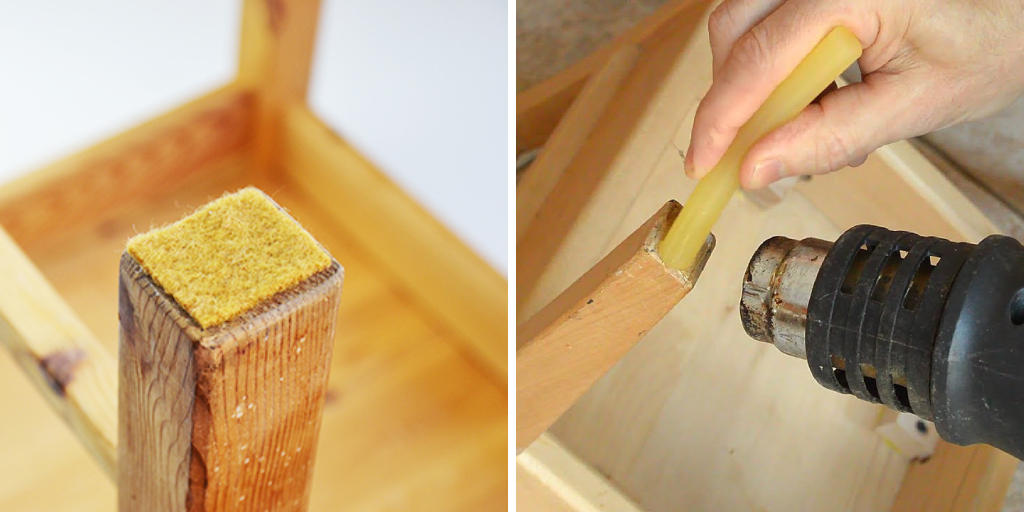
Read on in this blog post to learn our easy-to-follow step-by-step guide on how to get felt pads to stick to chair legs that stay put and reliably move chair legs around without worry or frustration. Get ready for a squeak-free home and smooth wooden floors again!
Why Felt Pads are Essential for Chair Legs?
Felt pads provide a protective barrier between your chair legs and your floor, preventing scratches, dents, or scuffs on the surface. They also reduce noise by dampening vibrations caused by moving chairs around. Felt furniture pads are quick and affordable solutions to protect floors while helping to keep household noises at bay.
Step-by-step Guidelines on How to Get Felt Pads to Stick to Chair Legs
Step 1: Clean the Chair Legs and Floor Surface
Any surface that is to be stuck with any adhesive needs to be clean and free of dust, dirt, or debris. Therefore, start by cleaning your chair legs with a damp cloth or sponge and let them dry completely before attaching felt pads. Additionally, wipe down the floor surface where the chairs will be placed. This will ensure a strong bond between the felt pads and the surface.
Step 2: Choose the Right Size Felt Pads
When it comes to felt pads, size matters! Measure your chair legs’ exact circumference and make sure to buy corresponding-sized felt pads. Too small of a pad will not provide enough coverage, while too large of a pad may not stick properly. Choosing the right size will ensure a snug fit and maximum protection for your floors. If you have different-sized chair legs, opt for a pack of assorted sizes.
Step 3: Peel and Stick the Felt Pads
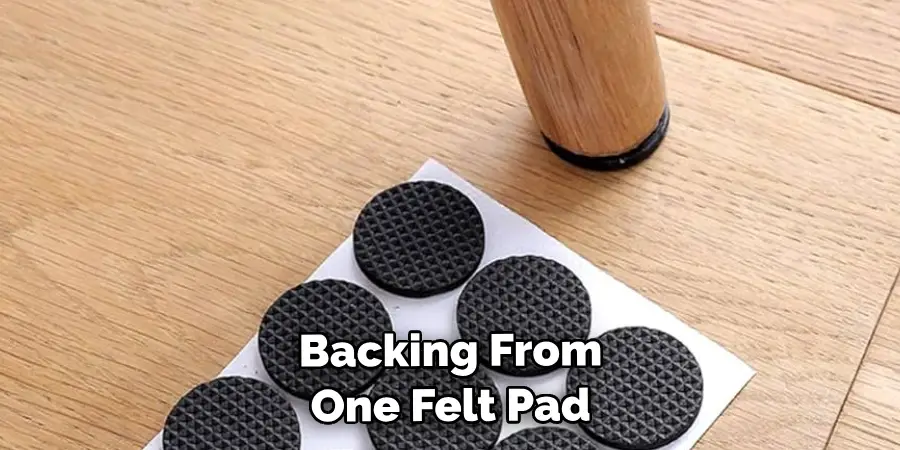
Remove the backing from one felt pad at a time, starting with the largest chairs in your set. Align it with the bottom of each leg and press firmly to ensure proper adhesion. Smooth out any air bubbles or wrinkles as you go. Once secure, repeat with the rest of the chair legs. Peeling and sticking one pad at a time will ensure a more accurate placement.
Step 4: Allow the Adhesive to Set
After attaching all felt pads, allow them to set for at least 24 hours before using the chairs again. This will ensure that the adhesive is fully bonded and will prevent any possible shifting or sliding of the pads. If you need to use the chairs before 24 hours, make sure to be gentle with them. Make sure to check the pads periodically as well and replace them if they show signs of wear or detachment.
Additional Tips and Tricks to Get Felt Pads to Stick to Chair Legs
1. If you are looking for long-lasting results, consider using super glue or strong adhesive to attach the felt pads to your chair legs. This will ensure that the pads stay in place even with regular use.
2. Before sticking the felt pads onto the chair legs, make sure to clean and dry both surfaces thoroughly. Dirt or moisture can prevent the adhesives from properly bonding and may cause the pads to come off easily.
3. If you are using self-adhesive felt pads, apply a little pressure after sticking them onto the chair legs. This will help the adhesive bond better and ensure that the pads stay in place.
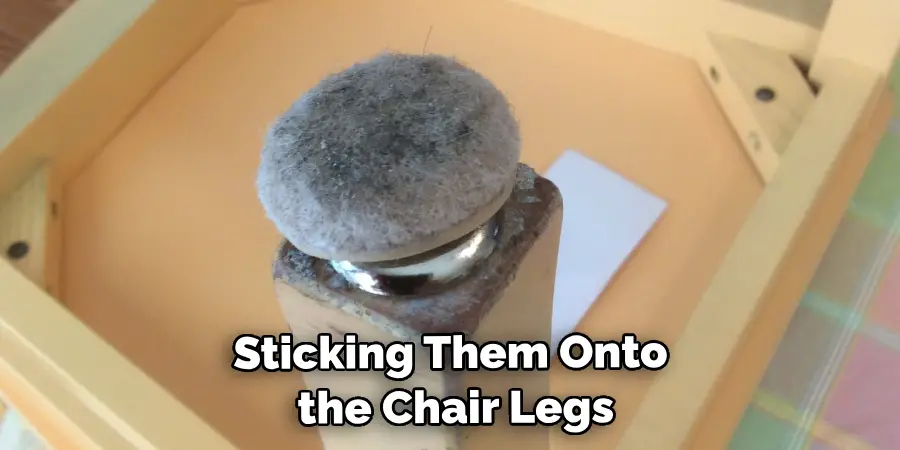
4. Consider using larger or thicker felt pads for heavy furniture pieces such as dining chairs or couches. These types of furniture tend to put more pressure on the floor and can cause smaller or thinner felt pads to come off easily.
5. In case your chair legs are made of metal, consider using adhesive-backed rubber pads instead of felt pads. Rubber has a better grip on smooth surfaces and will provide better protection for your floors.
6. If you are dealing with slippery or uneven surfaces, purchase non-slip felt pads that come with a rubber backing. These types of pads are designed to stay in place and prevent furniture from sliding or tipping over.
7. For an eco-friendly option, consider using felt pads made from recycled materials. They work just as well as traditional felt pads and are better for the environment.
8. If you have tried all of the above tips and still struggle to get felt pads to stick to your chair legs, consider replacing the pads with furniture glides. These are usually made of plastic or nylon and can be easily attached to your furniture without any adhesives.
9. Remember to regularly check and replace worn-out or damaged felt pads. Over time, the adhesive may wear off or the felt may become too thin, reducing their effectiveness in protecting your floors.
10. Lastly, keep in mind that felt pads are not only useful for chairs but can also be used on other types of furniture such as tables, cabinets, and sofas.
Following these tips and tricks will help you ensure that your furniture is protected and your floors remain scratch-free. Additionally, taking care of your furniture legs will also extend their lifespan, saving you from the hassle of constantly replacing them. So next time you are looking for ways to make felt pads stick to chair legs, remember to consider these helpful tips for better results. Happy decorating!
Precautions Need to Be Followed for Getting Felt Pads to Stick to Chair Legs
1. Before sticking the felt pads to the chair legs, make sure that the surface is clean and free of any dust or debris. This will ensure better adhesion of the pads.
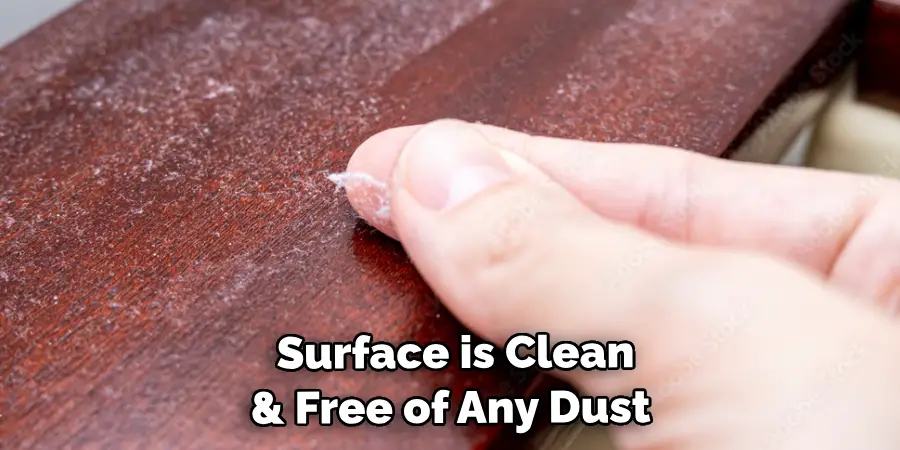
2. It is important to choose the right size and shape of felt pads for your chair legs. Measure the diameter and height of the leg before purchasing the pads to ensure a perfect fit.
3. If your chair legs are made of wood or metal, consider sanding down any rough edges before applying the felt pads. This will prevent them from coming off easily.
4. For better-sticking power, apply a small amount of wood glue or super glue to the felt pads before attaching them to the chair legs. This will create a stronger bond between the pad and leg.
5. Allow the glue to completely dry before using the chairs. This will ensure that the felt pads are properly secured and won’t come off easily.
6. Avoid dragging or moving furniture with felt pads on a rough or abrasive surface, as this can cause them to wear out quickly and lose their adhesive properties.
7. Regularly check the felt pads for any signs of wear and tear, and replace them when necessary to maintain their effectiveness.
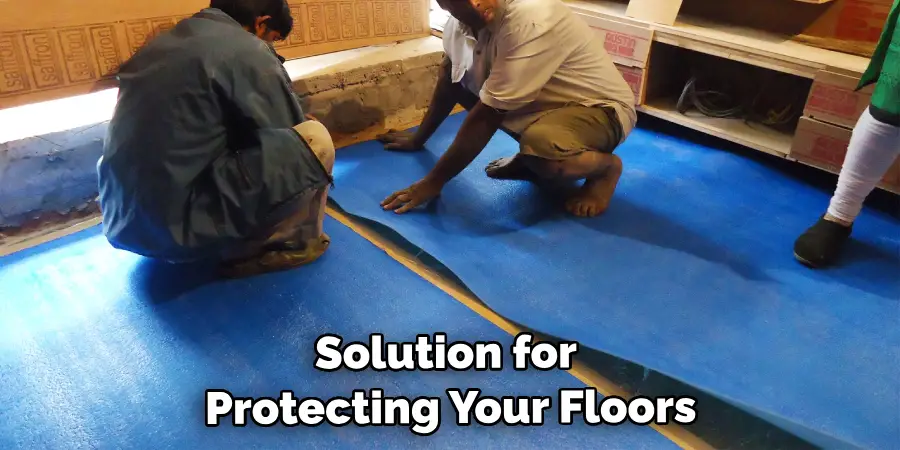
8. Keep in mind that felt pads are not a permanent solution for protecting your floors from scratches and scuffs. They will eventually wear out and need to be replaced, so it’s important to regularly monitor and replace them as needed.
Following these precautions will help ensure that your felt pads stay securely attached to your chair legs, providing long-lasting protection for both your furniture and floors. So, make sure to follow them carefully for the best results!
Frequently Asked Questions
How Do I Choose the Right Felt Pads for My Chair?
When selecting felt pads, make sure they are specifically designed for furniture legs. Regular adhesive pads may not be strong enough or durable for this purpose. It is also important to consider the size and shape of your chair legs, as well as the weight of your chairs. Additionally, look for pads with a strong adhesive backing to ensure they stay in place.
Can I Use Felt Pads on Any Type of Flooring?
Felt pads are typically safe to use on hardwood, tile, and laminate floors. However, it is important to check the manufacturer’s recommendations and test the pads in a small inconspicuous area first before applying them to your furniture. Some types of flooring, such as vinyl or linoleum, may not be suitable for felt pads and could potentially cause damage.
How Do I Properly Apply Felt Pads to My Chair Legs?
Clean the surface of your chair legs thoroughly before applying the felt pads to ensure strong adhesion. Peel off the backing from the pad and firmly press it onto the chair leg, making sure there are no air bubbles. It is also recommended to let the pads sit for a few hours before using the chairs to allow the adhesive to fully bond.
How Can I Make Sure Felt Pads Stay on My Chair Legs?
In addition to properly cleaning and applying the pads, you can also reinforce them with hot glue or an extra layer of adhesive. However, be cautious when using hot glue as it can leave residue on your floors if not applied carefully. You can also opt for self-adhesive felt pads with a stronger adhesive backing.
Are Felt Pads Durable and Long-Lasting?
The durability of felt pads depends on the quality and type of pad you choose, as well as the amount of use and weight placed on your furniture. Generally, high-quality felt pads can last for several months to a year before needing replacement. However, it is important to regularly check and replace worn or damaged pads to prevent any potential damage to your floors.
Conclusion
Knowing how to get felt pads to stick to chair legs is crucial for protecting your floors and reducing noise from moving chairs. By choosing the right pads, properly cleaning and applying them, and regularly checking for wear and tear, you can ensure your furniture stays in place and your floors stay scratch-free. So next time you purchase felt pads for your chairs, keep these tips in mind to get the most out of your investment.
